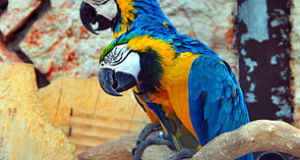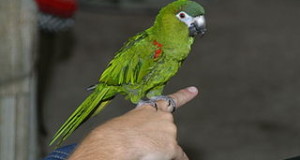A study published this month (May, 2009) by the Massachusetts General Burn Hospital establishes for the first time that a stimulating captive environment can reverse the negative health effects of injury and isolation. Although rats were the study subjects, the results are believed applicable to a wide range of animals, including birds.
Stress and Captivity
Stress has previously been shown to significantly delay wound healing in humans and many animals. Students of ethology (animal behavior) have long advised that providing captive animals with opportunities to play, explore, build nests and otherwise remain stimulated improves overall health. In fact, the American Zoo Association now requires member organizations to incorporate “behavioral enrichment” into the husbandry protocols of most species.
Environment and Health
In the current study, 92% of young rats raised in group situations exhibited normal to rapid healing abilities. Only 12% of those raised in isolation (a stressful situation for young rats) healed well. However, when rats raised in isolation were provided with stimulating environments (in this case, the opportunity to build new nests twice weekly), 64% healed normally.
Environmental stimulation was also shown to reduce hyperactive behavior and even to positively affect gene expression in the brain’s hypothalamus, which is important in regulating stress response.
Parrots and other Birds
The implications for parrot owners are clear – provide these intelligent, social birds with companionship (human or otherwise) and as stimulating an environment as is possible. But don’t forget finches, doves and others not deemed as “intellectually gifted” as our Psittacine friends – my experience has shown that a host of animals, including frogs, lizards and fishes, utilize and benefit from behavioral stimulation.
Enriching Your Pet’s Life
For ideas on improving your bird environment and, it follows, health, please check out our extensive line of bird toys, playpens and cages.
Further Reading
For more on this important topic, please see my article Behavioral Enrichment for Parrots and Finches Use Parrot Toys Too!
Images referenced from Morguefile.
 That Bird Blog – Bird Care and History for Pet Birds
That Bird Blog – Bird Care and History for Pet Birds



